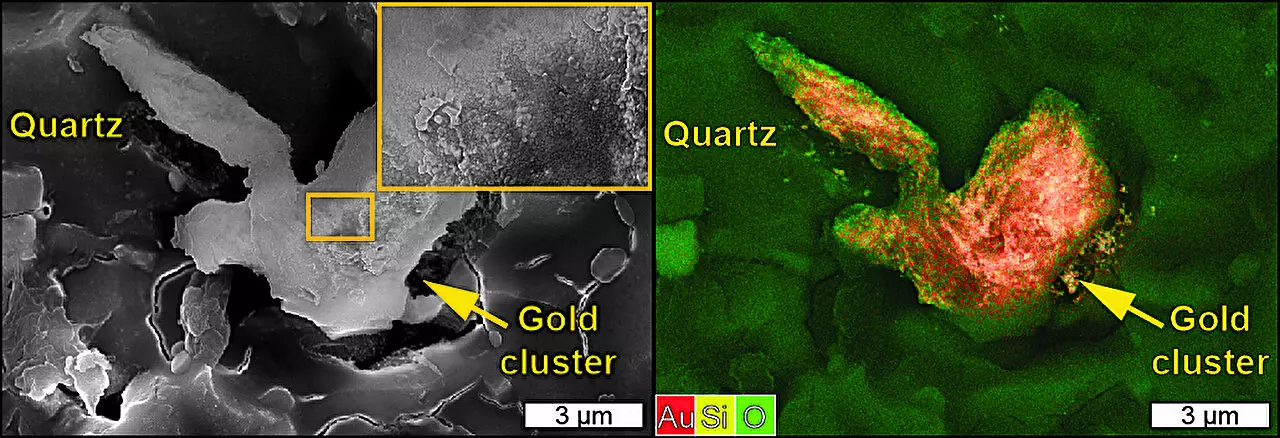For centuries, gold has sparked fascination and driven economic booms across the globe. Its allure, blending rarity and aesthetic appeal, is timeless. While the formation of gold nuggets has long intrigued scientists, the underlying processes remain partially shrouded in mystery. Recent research led by a team of geologists from Monash University, under the guidance of Dr. Chris Voisey, has introduced a groundbreaking perspective that may reshape our understanding of how these coveted treasures are formed. By invoking the principle of piezoelectricity, this study not only elucidates the conditions under which gold accumulates but also suggests an exciting electrifying dimension to this natural phenomenon.
Traditionally, the genesis of gold nuggets has been attributed to the precipitation of gold from superheated, mineral-rich fluids that seep through fractures in Earth’s crust. As these hot fluids cool or chemically alter during their passage, they leave behind gold deposits trapped in quartz veins. This established narrative, although compelling, fails to thoroughly explain the prolific emergence of larger gold nuggets, particularly given the notoriously low concentrations of gold present in these minerals. Researchers have long sought alternative explanations to account for the substantial nuggets that so many treasure hunters chase.
Enter piezoelectricity, a phenomenon that manifests itself when certain materials, like quartz, generate electric charges in response to mechanical stress. This concept takes on a novel significance when we consider its possible implications during seismic events. In their research, the Monash team proposed a theory: what if the physical stresses from earthquakes could stimulate electrochemical processes that contribute to gold sedimentation? This prompted researchers to design an experiment aimed at simulating conditions within the Earth during such geological upheavals.
The proposed experiment involved submerging quartz crystals in a gold-laden liquid while subjecting them to mechanical stress that mimicked the shaking experienced during an earthquake. Researchers applied systematic vibrations, monitoring the interactions between the quartz and gold under controlled circumstances. The outcomes from this innovative approach exceeded expectations—what they discovered transformed their hypothesis into an electrifying reality.
Dr. Voisey and his team observed that the stressed quartz crystals not only facilitated the deposition of gold onto their surfaces but also acted as nucleation sites for the aggregation of gold nanoparticles. Notably, these tiny granules exhibited a tendency to coalesce around pre-existing gold particles, further enhancing their growth. This leads to a dynamic process whereby the quartz’s piezoelectric properties convert mechanical stress into chemical affluence, essentially acting like a natural battery where gold acts as the electrode. Each seismic event could effectively trigger further gold deposition, gradually contributing to the size of the nuggets.
This newfound understanding shifts the paradigm regarding how large gold nuggets are formed, linking the high-energy atmospheric conditions embedded within the Earth’s crust to the beautiful yet elusive deposits that so many treasure seekers covet. The synergy between geological activity and electrochemical processes reveals a complex interplay that highlights the interconnectedness of natural systems. Moreover, this research demonstrates the potential for further inquiry into the ways physical and chemical triggers converge to create the world around us.
The findings from Monash University’s esteemed research team represent a significant leap forward in geology; they open doors for additional investigations into the electrifying processes that govern gold nugget formation and possibly other mineral deposits. As we continue to unravel the mysteries of Earth’s intricacies, one can only anticipate the innovative methodologies that will emerge in the pursuit of knowledge about our planet’s riches. The electrifying nature of gold formation, as hinted at by this research, serves as a reminder of the extraordinary phenomena that lie beneath us—waiting to be discovered.


Leave a Reply